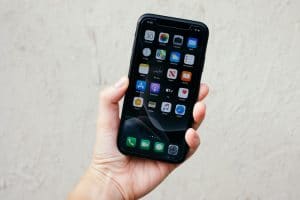What To Know About Tympanosclerosis
Tympanosclerosis is a post-inflammatory condition affecting the tympanic membrane, or eardrum, and middle ear. Tympanosclerosis can result in hearing loss or be asymptomatic and...
Posted on February 12, 2021
Hearing AidsWhile an estimated 48 million Americans have hearing loss, only about one in five actually seeks treatment. This is likely in part due to assumptions about hearing aids that are no longer true. Hearing aid technology is smarter and more discreet than ever, and we’re excited to tell you about the features today’s state-of-the-art devices have to offer.

Bluetooth connectivity enables your hearing aids to act like a pair of wireless earbuds for any device with Bluetooth like your smartphone, tablet, laptop and even some TVs. This means you can stream music and videos straight to your ears.
Bluetooth also allows you to adjust your hearing aids with a smartphone app, essentially turning your phone into a remote control. This is ideal for people with dexterity issues who have difficulty using the tiny buttons on the devices themselves.
Hearing aid batteries need to be replaced every three to ten days depending on usage. It can be extremely inconvenient to reach for replacement batteries only to find none, and have to make a trip to the store without any power in your hearing aid.
Many of today’s hearing aids now have built-in rechargeable batteries. One charge provides a full day of hearing, and it is easy and convenient to simply store the hearing aids on their charger at night.
Even with hearing aids, background noise can be a notoriously challenging environment for people with hearing loss. Fortunately, you can enjoy conversation over coffee at Elixr Coffee Roasters with ease when wearing a hearing aid with built-in background noise reduction. These devices use sophisticated algorithms to identify background noise and filter it out.
In the same vein, today’s hearing devices provide better speech clarity than devices of the past. Many people report that their hearing loss makes it more difficult to understand speech, though they feel they can hear people’s voices just fine. Therefore, simply amplifying sound is not enough. Instead, take advantage of advanced features like narrow directionality, echo adjustments and spatial configurators to hear speech sounds crystal clear.
For more information about the features of today’s hearing aids or to schedule an appointment with an expert, call Pinnacle ENT Associates today.
Tympanosclerosis is a post-inflammatory condition affecting the tympanic membrane, or eardrum, and middle ear. Tympanosclerosis can result in hearing loss or be asymptomatic and...
No product lasts forever, including your hearing aids. Most will function well for three to seven years, so you’ll likely need to replace them...
Ménière’s disease is an uncommon disease characterized by hearing loss, tinnitus and impactful vertigo. It’s difficult to diagnose due to its symptoms resembling those...
Otomycosis is a fungal ear infection affecting the outer ear. Fungal ear infections are less common than bacterial infections, making up 10% of all outer...